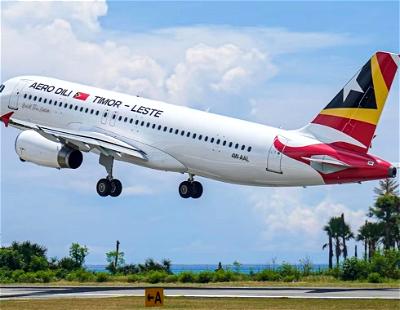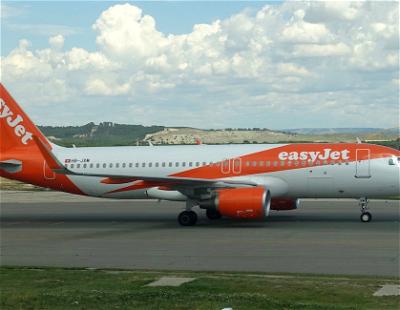As it’s now 2018, I think it’s time to reflect on one of the most remarkable things to happen in the airline industry in 2017. No, I’m not talking about the creative methods that airlines have used to add fees and remove passengers from overbooked flights, but rather I’m talking about safety.
2017 was the safest year on record for commercial air travel, as airlines had zero accident deaths on commercial passenger jets last year.
Now, I think it’s important to point out that the above “zero fatality” statistic is specific to jets (meaning it excludes props), and it’s specific to commercial aircraft (meaning it excludes cargo jets). In early 2017 we saw a cargo 747 crash in Bishkek, Kyrgyzstan, killing 39 people (four on the plane and 35 on the ground), and just yesterday we saw a Nature Air Cessna 208 Grand Caravan crash in Costa Rica, killing 12 people onboard.
Reuters notes that in 2017 there were a total of 10 fatal airliner accidents (all of which were prop planes or cargo jets), resulting in 79 deaths (44 passengers and 35 people on the ground). This is a significant improvement over 2016, when there were 16 accidents resulting in 303 deaths. Just to show how much safety has improved, as recently as 2005 there were 1,015 commercial passenger deaths worldwide, so that’s an incredible improvement.
To me it’s just a miracle how safe aviation is. While I realize planes are highly automated nowadays, there’s still a lot of human input involved, and all it takes for disaster to strike is for one little thing to go wrong. It’s clear that while airlines might be nickel and diming when it comes to their passenger experience, for the most part they aren’t cutting corners with safety.
The fact that 2017 was so safe is especially impressive when you consider how much global aviation has grown the past few years, and in particular, how many new low cost carriers we’ve seen emerge lately. With the increased demand for pilots, we’re seeing more pilots with less experience at the controls of airliners. In terms of pilot error, in many ways you’d think aviation would be safest during a recession when generally pilots aren’t being hired, since you’d assume the average pilot in the cockpit has the most experience during those times. But clearly that isn’t totally the case.
A big thanks to all the people — pilots, flight attendants, mechanics, rampers, etc. — who work tirelessly to make aviation as safe as it is.





Ben,
As a Commercial pilot I can tell you it takes a lot more than one little thing to go wrong. Little things go wrong all day , everyday. Professional pilots fix and adjust. It takes a long stretch of small things going wrong. Usually 10-15 events that lead to a disaster. It’s never ever one little thing
Why exclude props from the statistics when they are also flights? Just seems like massaging the figures to get the desired result rather than the correct result.
Someone in my college and my class died in the Costa Rica crash. RIP.
Thanks Air Canada! We were *this* close to having it be the deadliest in history with that single flight that almost landed on the taxiway.
I partially jest, aviation is by far the safest means of travel.
@Lucky - I drew this up for fun and taught why not show it to you. It's a map of all your (published) travels of 2017 (It does not include posts of the other contributors to this site)
http://www.gcmap.com/mapui?P=TPA-YYZ-CAI-AMM-KUL-BEN-DXB-LAX%2CLAX-TPE-SIN-DPS-HKG-MLE-CDG-JFK-YVR%2CSFO-ICN-KTM-PBH-DAC-KWI-JFK%2CSFO-HKG-SFO%2CEWR-LAX%2CIAD-AUH-SYD-MEL-LAX%2CJFK-BEG-CDG-FRA-LAX%2CJFK-RUH-DXB-BOM-LHR-TUN-YUL%2CYUL-MUC-NAP-JFK%2CBOS-PDL-LIS-MXP-CDG-IAH%2CSFO-PEK-ULN-FRA-IAH-LAX%2CLAX-SEA%2CJFK-TAS-DYU-DXB-RUH-LAX%2CLAX-ORD-JFK-LAX%2CLAX-XMN-CTU-XMN-LAX%2CLAX-HNL-LNY-OGG-HNL-LAX%2CLAX-ICN-CTU-TNA-LAX%2CYTZ-EWR-TLV-LHR-DUB-JFK-LAX%2CMEX-SCL-IPC-SCL-MEX&MS=wls&DU=mi
@Lucky - I drew this up for fun and taught why not show it to you. It's a map of all your (published) travels of 2017 (It does not include posts of the other contributors to this site)
http://www.gcmap.com/mapui?P=TPA-YYZ-CAI-AMM-KUL-BEN-DXB-LAX%2CLAX-TPE-SIN-DPS-HKG-MLE-CDG-JFK-YVR%2CSFO-ICN-KTM-PBH-DAC-KWI-JFK%2CSFO-HKG-SFO%2CEWR-LAX%2CIAD-AUH-SYD-MEL-LAX%2CJFK-BEG-CDG-FRA-LAX%2CJFK-RUH-DXB-BOM-LHR-TUN-YUL%2CYUL-MUC-NAP-JFK%2CBOS-PDL-LIS-MXP-CDG-IAH%2CSFO-PEK-ULN-FRA-IAH-LAX%2CLAX-SEA%2CJFK-TAS-DYU-DXB-RUH-LAX%2CLAX-ORD-JFK-LAX%2CLAX-XMN-CTU-XMN-LAX%2CLAX-HNL-LNY-OGG-HNL-LAX%2CLAX-ICN-CTU-TNA-LAX%2CYTZ-EWR-TLV-LHR-DUB-JFK-LAX%2CMEX-SCL-IPC-SCL-MEX&MS=wls&DU=mi
Traveling by air is the safest way to travel bar none. Considering how many planes are in the air each year how many passengers fly and under what circumstances they fly in, it is truly remarkable that the actual chance of getting injured or killed in the air is virtually zero. Traveling is generally safe these days in all modes. Most of us will go our entire lives without ever experiencing serious injury in a...
Traveling by air is the safest way to travel bar none. Considering how many planes are in the air each year how many passengers fly and under what circumstances they fly in, it is truly remarkable that the actual chance of getting injured or killed in the air is virtually zero. Traveling is generally safe these days in all modes. Most of us will go our entire lives without ever experiencing serious injury in a car, plane, boat, or train. I travel 2-3 times a month. I fly 4-5 times a year. In 2017 took all forms of transportation save a boat (no cruises this past year...). With that said, flying is not my personal preference for traveling. One has to for practical purposes but the in air experience in coach leaves much to be desired. I can accept the maze of ticket prices, fees, and extensive airport procedures but sitting in a plane for more than an hour or so is downright uncomfortable. On longer hauls (international/transcon) I will upgrade to first or business when I can do so but I don't fly enough to get award space. I am getting ready to retire so my flying days will decrease as times goes on. In the 1970s, I began flying in earnest out of the Dallas, TX area and quite often on Braniff which dominated DFW in those days. The flight from DFW to LHR non-stop the the prestige flight. For $795 you had your choice of a non-stop 747 jet or the Concorde with a stop in Washington DC for crew change. First class. They called it the flying pumpkin. Those were the days. But I love this website!
Maybe try reading the full article, James.
@james, reading comprehension not your strong suit, eh?
Sorry Lucky, the story is wrong.
The December 31st Nature Air crash killing 12 in Costa Rica jinxed the 2017 streak.
I’m currently in Costa Rica, only about 50 miles north of the crash site, and I know someone who was supposed to be on the flight that crashed yesterday. Luckily he missed his flight, which meant that he is safe. Thank god.